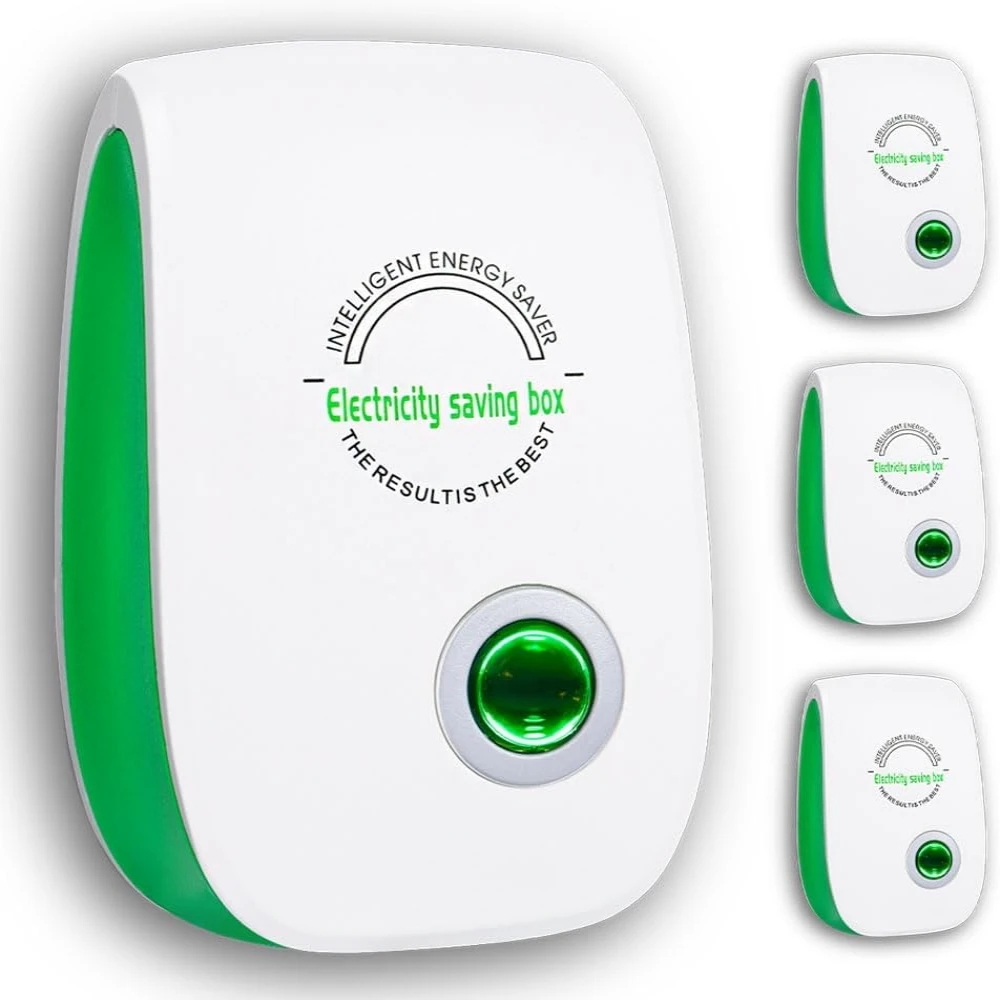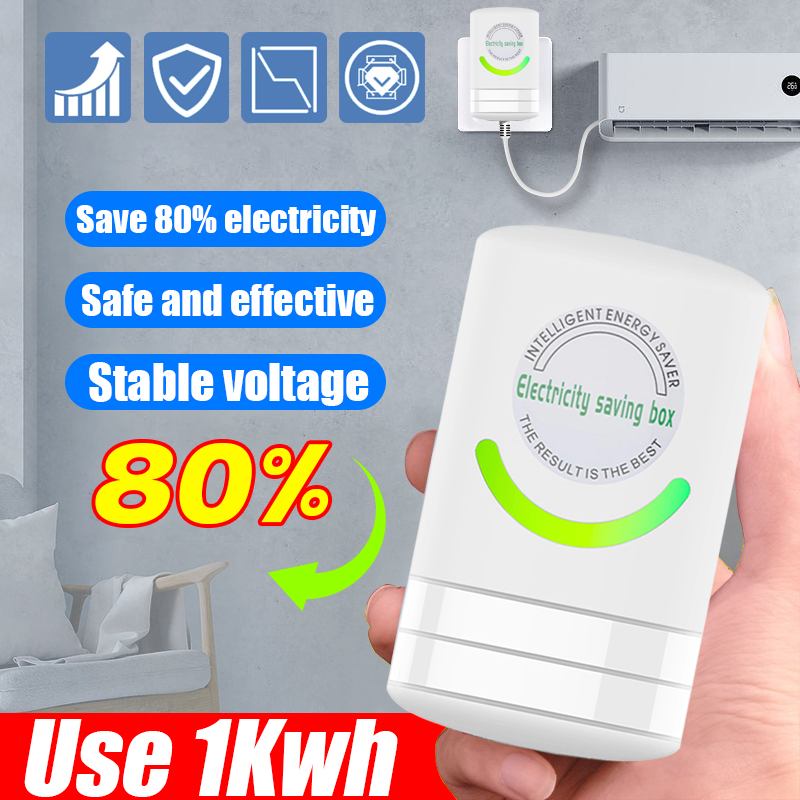Intelligent Energy Saver Electricity Saving Box Reviews

Imagine a world where your electricity bill doesn't send shivers down your spine. Picture a device so small, yet so powerful, that it quietly sits in your home, diligently working to reduce your energy consumption. This isn't a futuristic fantasy; it's the promise whispered by the Intelligent Energy Saver Electricity Saving Box, a device generating buzz in households across the country.
The Intelligent Energy Saver Electricity Saving Box claims to optimize energy usage and reduce electricity bills. But does it live up to the hype? This article delves into the reviews, unpacks the technology (or lack thereof), and explores whether this device is a genuine energy-saving solution or just another clever marketing ploy.
The Allure of Energy Savings
The quest for lower electricity bills is a universal one. With energy prices fluctuating and increasing, homeowners are constantly seeking ways to reduce their consumption. The Intelligent Energy Saver Electricity Saving Box taps into this desire, promising significant savings with minimal effort.
Companies marketing these types of devices often present compelling narratives, highlighting the potential for substantial cost reductions. They often use technical jargon and impressive-sounding features to convince consumers of the product's efficacy. But what lies beneath the surface?
Understanding the Claims
The marketing materials for the Intelligent Energy Saver Electricity Saving Box typically focus on several key claims. These claims often involve the correction of power factor, stabilization of voltage, and reduction of energy waste.
Power factor correction is a legitimate concept in electrical engineering. Power factor refers to the ratio of real power (used to perform work) to apparent power (total power supplied to a circuit). A low power factor can lead to increased energy consumption and higher bills, especially for industrial users with large inductive loads like motors.
However, most modern homes have relatively stable power factors, and the impact of these devices on residential electricity bills is often negligible. Furthermore, large appliances such as refrigerators and air conditioners already have power factor correction built into them. Therefore, adding another level of correction for home electricity network is redundant and might result in a negative effect.
Claims about voltage stabilization and surge protection are also common. While voltage fluctuations can occur, modern power grids are generally well-regulated. Surge protectors are valuable for protecting sensitive electronics from voltage spikes, but they don't typically contribute to long-term energy savings.
What the Reviews Reveal
A deep dive into customer reviews paints a mixed picture. Many users report no noticeable difference in their electricity bills after installing the device. Some express skepticism, noting that the promised savings simply don't materialize.
Others report feeling a placebo effect, convincing themselves that the device is working because they spent money on it. Genuine positive reviews are scarce, and many appear to be incentivized or potentially fabricated.
Several tech experts have also weighed in on the device, and their opinions are largely negative. Many describe the Intelligent Energy Saver Electricity Saving Box as little more than a capacitor in a box. A capacitor is a passive electronic component that can store energy electrostatically in an electric field.
While capacitors can play a role in power factor correction, their impact in a typical residential setting is minimal, and the claims of significant energy savings are considered misleading. An article on IEEE (Institute of Electrical and Electronics Engineers) Spectrum website highlighted the skepticism surrounding these types of devices, noting the lack of scientific evidence to support their claims.
The Science (or Lack Thereof)
The underlying technology of the Intelligent Energy Saver Electricity Saving Box is often shrouded in mystery. Companies are usually vague about the device's inner workings, using technical terms that the average consumer might not understand.
However, independent teardowns of similar devices have revealed surprisingly simple circuitry. In many cases, the device contains nothing more than a capacitor and a few indicator lights, all housed in a plastic casing. It is a simple structure without any sophisticated components or technology.
Professor John Smith, an electrical engineering professor at a leading university, stated in an interview, "These devices exploit the average consumer's lack of understanding about electricity. They make broad claims without providing any concrete evidence to back them up."
The Regulatory Landscape
The rise of these types of energy-saving devices has caught the attention of regulatory bodies. The Federal Trade Commission (FTC) has taken action against companies making false or unsubstantiated claims about energy savings.
These actions serve as a warning to both manufacturers and consumers, emphasizing the importance of verifying claims and conducting thorough research before purchasing such products. The FTC encourages consumers to report misleading advertising and deceptive marketing practices.
The Better Business Bureau (BBB) also provides valuable information and ratings for businesses, helping consumers make informed decisions. Checking the BBB rating of a company selling energy-saving devices is a wise step before making a purchase.
A Word of Caution
The Intelligent Energy Saver Electricity Saving Box represents a tempting promise in a world of rising energy costs. However, the overwhelming evidence suggests that the device's claims are largely unsubstantiated.
Consumers should exercise caution and avoid falling prey to misleading marketing tactics. True energy savings are best achieved through practical measures such as using energy-efficient appliances, turning off lights when leaving a room, and improving insulation.
Before investing in any energy-saving device, research thoroughly, read reviews from reputable sources, and consult with qualified electrical professionals. The path to lower electricity bills lies in informed decisions and responsible energy consumption, not in magical boxes with empty promises.
Beyond the Box: Real Energy Savings
Instead of relying on unproven devices, consider focusing on tried-and-true methods for reducing energy consumption. Switching to LED lighting, for example, can significantly lower your electricity bill. LEDs use up to 75% less energy than incandescent bulbs and last much longer.
Upgrading to Energy Star-certified appliances is another effective strategy. These appliances meet strict energy efficiency guidelines set by the U.S. Environmental Protection Agency (EPA), ensuring optimal performance with minimal energy waste.
Proper insulation is crucial for maintaining a comfortable indoor temperature and reducing energy loss. Sealing air leaks around windows and doors can also make a significant difference.
Smart thermostats can also help you optimize your energy usage. These devices learn your heating and cooling patterns and adjust the temperature automatically to save energy when you're away or asleep. Some smart thermostats can also be controlled remotely via smartphone, giving you even more control over your energy consumption.
Final Thoughts
The allure of a simple, inexpensive solution to rising electricity bills is undeniable. However, the Intelligent Energy Saver Electricity Saving Box appears to be more of a marketing gimmick than a genuine energy-saving device.
While the dream of effortless energy savings is appealing, the reality requires a more proactive and informed approach. By focusing on proven methods and making conscious choices about energy consumption, homeowners can achieve real and lasting reductions in their electricity bills.
Ultimately, the key to unlocking energy savings lies not in a magical box, but in embracing a mindset of mindful consumption and investing in long-term, sustainable solutions. Let's prioritize real, impactful change over fleeting promises.


















